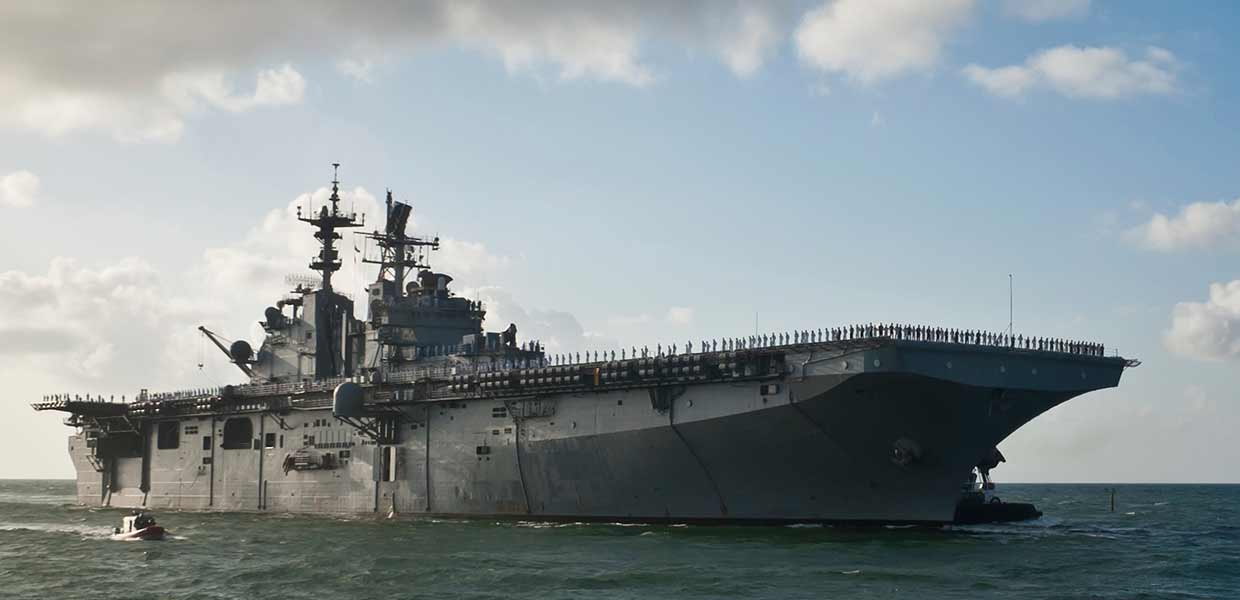Tools are critically needed to develop watchbills and mission plans that provide for adequate recovery opportunity. Once the mission is underway deviations to the mission plan can and usually do occur for any number of reasons such as unplanned technical maintenance to mission critical systems, severe weather, or medical emergencies. Fatigue mitigation tools must be capable to track and detect emerging fatigue risk resulting from differences between the planned scenario and actual mission events. Fatigue Meter is being integrated with submarine mission planning software to provide Navy mission planners with the capability to develop fatigue-optimized watchbills and mission plans and track fatigue real-time during missions.

Challenges
Performance impairments in Navy operations resulting from mission related fatigue stressors such as extended duty hours, night work, sleep restriction, and circadian desynchrony (from crossing time-zones). These impairments threaten safety and mission success.
No incumbent connection between the scheduling applications and a fatigue risk management capability onboard Navy ship platforms.
Products and services
Team Insight
Dashboard
Fatigue Snapshot
“As a demonstrator of the capability to manage fatigue risk by utilizing the watchbill to effectively optimize sailor shift schedules, OWL proved its value and set the wheels in motion to advance the concept to the operational level. The transition to operational usage has begun as Pulsar is now working on the integration of its Fatigue Meter technology into the Navy’s NOSIS scheduling system with intended field trials at the end of 2018."
Steve Bruneau, Chief Operating Officer, Pulsar Informatics.
Tools are critically needed to develop watchbills and mission plans that provide for adequate recovery opportunity. Once the mission is underway deviations to the mission plan can and usually do occur for any number of reasons such as unplanned technical maintenance to mission critical systems, severe weather, or medical emergencies. Fatigue mitigation tools must be capable to track and detect emerging fatigue risk resulting from differences between the planned scenario and actual mission events. Fatigue Meter is being integrated with submarine mission planning software to provide Navy mission planners with the capability to develop fatigue-optimized watchbills and mission plans and track fatigue real-time during missions.
Solution
Pulsar Informatics has been developing fatigue risk management systems that can quantify the fatigue level of the sailor based on their work schedule (derived from the watchbill) to provide feedback to schedulers and the submarine command structure
Our continued development of the fatigue risk management capability is to expand the quantitative fatigue estimations into managerial information. By providing an application level dashboard to the submarine command structure, those in charge of scheduling or decision making can quickly identify sailors who are becoming fatigued, those who are deviating substantially from their own personal norm, and compare to their fellow sailors in the same department of the sub for relative fatigue considerations.
Further, the department, group, and even boat-level fatigue aggregations and trends can be quickly reviewed to assess risk associated with crew fatigue overall; crew readiness report.
The overall system works by utilizing the watchbill fatigue web service. When the watchbill scheduling tool (NOSIS created by Progeny) calls the fatigue web service over the submarine local area network (LAN) using the defined API, information about the sailor’s work schedule is passed to the Pulsar web service. The web service then quantifies the fatigue using the advanced biomathematical models. The fatigue information is then provided back to the scheduling system via the API so that fatigue information if present in the scheduling interface and managerial decisions can be more easily facilitated.
The system has three key components, an API for interaction with the scheduling application, a dashboard for monitoring sailor fatigue near real-time, and an analytics area to monitor fatigue analytics over time and spot trends and averages critical to ‘lessons learned’ that can shape more effective procedures on future missions.
Pulsar Fatigue Dashboard: Squadron analysts need an easy to read highlight-based view of the fatigue information. The Team Insight page also provides further lists, histograms and trends so that the bigger picture awareness of fatigue can be monitored and proactively managed. Whether it’s the identification of the top sailors to check in on, the fatigue level trends of the boat as a whole, and/or the various critical departments of the crew, the dashboard allows quick identification of issues so that mitigation strategies can be initiated and issues averted.
Sailor Fatigue Details: Armed with the overview information from the Dashboard or Team Insight, the first step in mitigation and addressing issues is to further identify what’s causing the fatigue. Users of the fatigue dashboard can navigate to details about a given crew member and see where in their respective schedule the high fatigue is occurring. With knowledge of this date, the schedule for that sailor can be altered and/or preemptive fatigue countermeasures could be prescribed.

